Chichen Itza: Wonder of the World
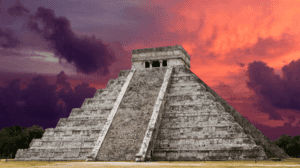
The Historical Beauty Continues to Captivate the World
Chichen Itza, situated on the Yucatan Peninsula in Mexico, is a pre-Columbian Mayan ruin and a testament to ancient civilization’s architectural and cultural advancements. This great city, once alive with the hustle and bustle of Mayan society, is now a UNESCO World Heritage site and one of the Seven Wonders of the World. The towering pyramids, intricate carvings, and sprawling ruins are only some of what makes this place so remarkable.
So why is Chichen Itza considered a wonder of the world? Well, for starters, it was one of the most significant cities in ancient Mesoamerican culture.
Furthermore, it’s still standing today despite being over 1000 years old! The people who created this masterpiece did so without any modern-day tools or machinery; it’s truly awe-inspiring when you consider how much time and effort went into constructing it.
The Wonder That Defies Time
The fact that Chichen Itza has survived for centuries without much restoration or upkeep is worth noting. Its pyramids and temples continue to stand tall as if they were built yesterday while many other structures have turned to dust over time. Not only that but Chichen Itza represents an excellent example of Mayan architecture – showcasing advanced knowledge in math and astronomy.
The use of astronomical symbols in their architecture shows just how technologically advanced these people were. Not only were they knowledgeable about astronomy but also hydrology- evident from the complex mathematical principles used to create their aqueducts – which they then used to provide water supply all throughout their city.
Why Other Wonders Don’t Compare?
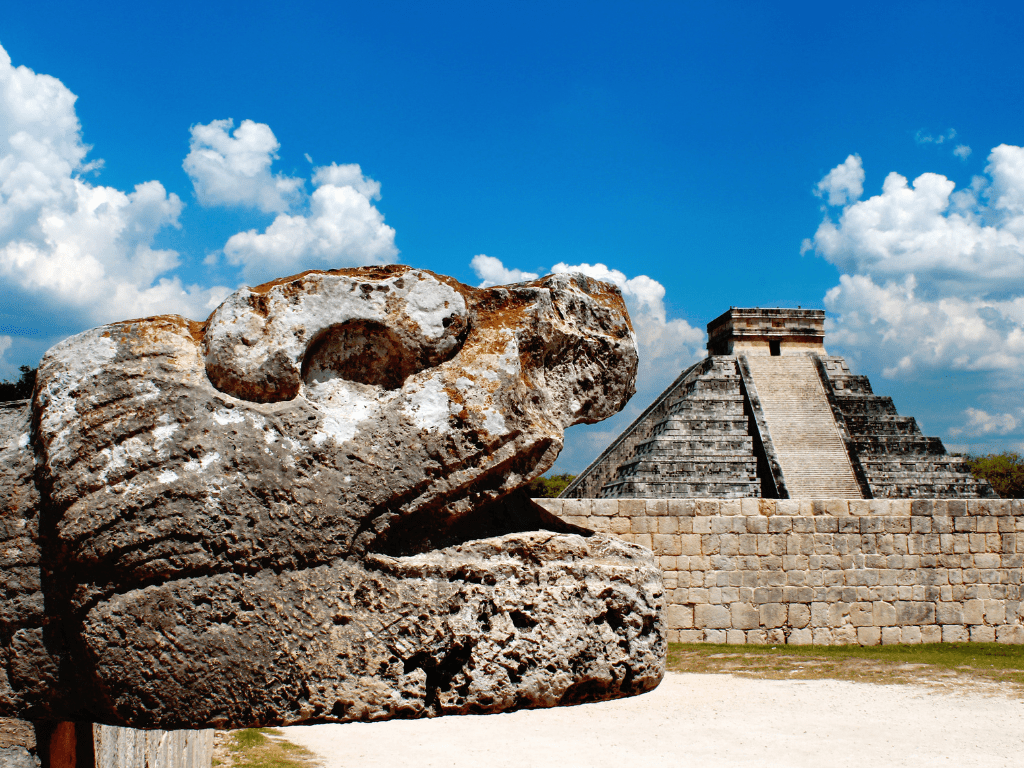
Some may argue that other places such as Machu Picchu or Petra should be considered a wonder of the world instead of Chichen Itza. However, these places do not compare to the historical significance and technological advancements shown by the Mayans at Chichen Itza.
The Great Pyramid, or El Castillo as it’s known locally, is an engineering marvel – a pyramid with four sides that is aligned with the stars in such a way that during equinoxes, you can see shadows crawl down its staircase resembling a snake slithering down. No other wonder of the world has anything like this.
Chichen Itza: A Symbol of Mexican Culture
Chichen Itza has become an essential symbol for modern-day Mexican culture and heritage. The country recognizes this site as one of its national treasures and displays it prominently on their currency.
Additionally, tourists from all over come to visit not only to learn about ancient civilization but also because it’s fascinating that these pyramids still stand today. Chichen Itza is worth all the hype surrounding it and more!
From its incredible architecture to its historical significance, there are numerous reasons why it deserves to be one of the Seven Wonders of the World. And despite being thousands of years old, it continues to captivate people from around the globe.
The Mysterious Origins of Chichen Itza
Chichen Itza, one of the Seven Wonders of the World, is a true testament to the advanced architectural and engineering skills of the ancient Mayans. However, despite centuries of study and exploration, there is still much that remains unknown about this incredible site. One of the greatest mysteries surrounding Chichen Itza is its origins.
While it is known that construction on Chichen Itza began around 600 AD, little is known about who first settled in the area or why they chose this location. Some historians believe that Chichen Itza was founded by people from Central Mexico who migrated southward.
Others suggest that it may have been built by a group of Maya who split off from another community and formed their own settlement. Regardless of its origins, what we do know is that over time Chichen Itza became a major political and cultural center for the Maya civilization.
The Significance of Chichen Itza in Mayan Culture
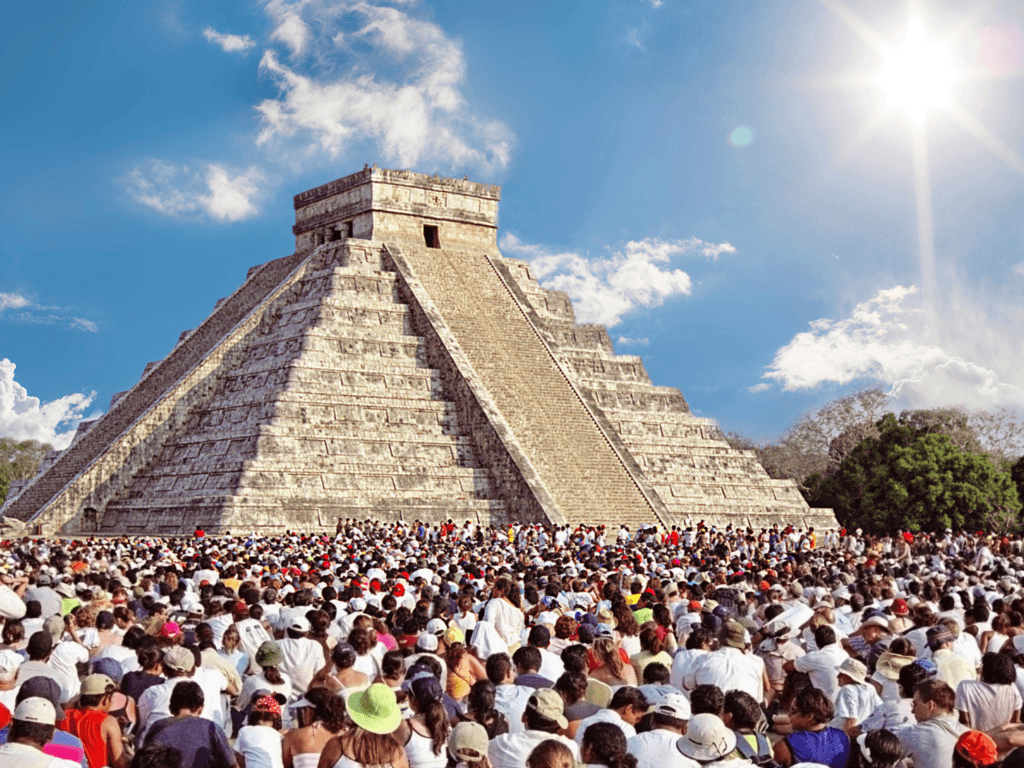
Chichen Itza played an enormous role in Mayan culture and religion. The site was built to align with various astronomical events such as equinoxes and solstices which were considered important dates for ceremonies.
This highly developed knowledge of astronomy allowed them to construct structures with great precision. One example is El Castillo or “The Temple of Kukulcan,” which stands at over 98 feet tall.
The pyramid’s four sides contain 365 steps (one for each day of the year), plus an additional platform at the top representing a leap year. On each equinox, shadow creates an illusion down one side resembling a serpent descending down towards earth symbolizing Kukulcan (a feathered serpent deity).
Another example is The Great Ball Court where two teams would play ball using their hips to score points through stone rings on either end walls; however, throughout history this has been described as a solemn and sacred event, rather than just a game. The winning team served as an honor to be sacrificed to the gods, while the losing team would be honored by being gifted alcohol and other materials.
In addition to its astronomical significance, Chichen Itza was also an important trade center. Mayan goods such as obsidian, cacao beans, and jade were traded here with other cultures from all over Mesoamerica.
Overall, the architectural wonders of Chichen Itza are a testament to the mayan’s advanced knowledge of mathematics and astronomy. The significance of Chichen Itza in Mayan culture goes beyond simply being a religious center or trading hub – it represents the height of Mayan civilization itself.
Architecture and Design
Description of Structures
Chichen Itza is home to an impressive array of ancient structures that are still standing today. One of the most recognizable is El Castillo, also known as the Temple of Kukulcan.
This massive pyramid stands at 98 feet tall and features four staircases with 91 steps each, totaling 364. The top platform represents the 365th day of the year.
The Temple of Warriors is another notable structure that features intricate carvings and columns depicting warriors and other figures from Mayan mythology. The Great Ball Court, which measures over 550 feet long, is where ancient Mayans played their traditional ballgame.
Unique Architectural Features
What sets Chichen Itza apart from other ancient structures is its unique architectural features that showcase the advanced engineering skills of the Mayan civilization. For example, El Castillo was designed so that during the spring and fall equinoxes, a shadow in the shape of a serpent appears on one side of the staircase as the sun moves across it. This phenomenon has led some to believe that Chichen Itza was used as an astronomical observatory.
Another example of advanced engineering can be found in El Caracol, which was likely used as an astronomical observatory housing a telescope-like apparatus for tracking celestial movements. The circular dome atop this structure features narrow openings strategically placed to align with celestial events such as solstices and equinoxes.
The Great Ball Court’s walls showcase intricately carved stone panels depicting scenes from mythological battles between good and evil forces. These carvings demonstrate not only artistic talent but also storytelling skills.
Several structures at Chichen Itza feature acoustical properties that allow for sound to echo or carry over long distances without amplification. This includes the Temple of Warriors and El Castillo, which create echoes resembling the chirping of birds or the roar of a jaguar.
The Grandeur in Scale
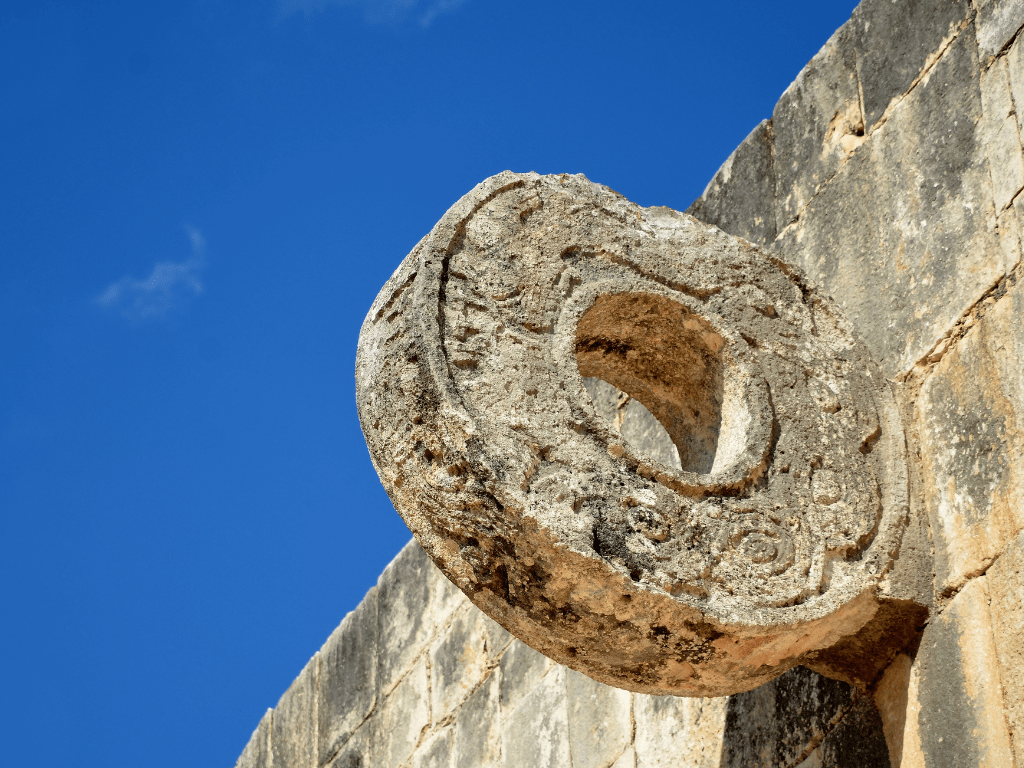
The sheer size and scale of Chichen Itza’s structures is another aspect that sets it apart from other ancient sites. El Castillo, for example, is one of the largest pyramids in Mesoamerica and required an estimated 100 years to complete. The Great Ball Court measures over 550 feet long and was capable of holding thousands of spectators.
The Temple of Warriors features numerous columns adorned with carvings depicting warriors, priests, and other important figures from Mayan mythology. Each column stands over 10 feet tall and is intricately detailed.
The grandeur in scale not only showcases the advanced engineering skills of the Mayans but also their wealth and power as a civilization. Chichen Itza’s architecture and design showcase the incredible engineering skills and artistic talents of the ancient Mayans.
From El Castillo’s shadow serpent to El Caracol’s celestial observations tools, each structure at Chichen Itza has its own unique features that set it apart from other ancient sites around the world. The grandeur in scale only adds to its importance as one of humanity’s greatest architectural achievements.
Mysteries and Legends
The Dark Side of Chichen Itza: Human Sacrifice
One of the most controversial and disturbing legends surrounding Chichen Itza is its connection to human sacrifice. According to historical accounts, the Mayans used to offer sacrifices to their gods in various ways, including decapitation, heart extraction, and drowning.
The Great Ball Court at Chichen Itza is believed to have been the site of some of these gruesome rituals. The losers of the ball game were sometimes chosen as sacrificial victims, and it is said that their blood would nourish the earth and ensure a good harvest.
Nowadays, tourists flock to Chichen Itza for its impressive architecture and cultural significance. However, it’s important not to forget the darker side of this ancient wonder.
While human sacrifice may seem barbaric by today’s standards, we must remember that it was an integral part of Mayan culture and religion. By exploring this aspect of Chichen Itza’s history, we can gain a deeper understanding of this fascinating civilization.
Unsolved Mysteries: Decoding the Enigmatic Structures
Despite decades of archaeological research, there are still many mysteries surrounding Chichen Itza that remain unsolved. One such mystery is how the Mayans were able to construct such intricate structures without modern tools or technology.
For example, El Castillo (also known as the Temple of Kukulcan) aligns perfectly with the sun during both equinoxes – but how did the Mayans manage to achieve this level of precision? There are also several artifacts found at Chichen Itza that have yet to be fully deciphered or understood by scholars.
For instance, there is a large stone tablet called La Estela de los Cuatro Soles (The Four Suns Stele) that depicts four different eras in Mayan history. However, the exact meaning of this tablet is still a matter of debate among experts.
It’s tempting to think that we have all the answers about Chichen Itza, but in reality, there is still so much we don’t know. Perhaps it’s this sense of mystery and wonder that draws visitors to this site year after year.
Final Thoughts
Despite its gruesome past and unsolved mysteries, Chichen Itza remains a must-see destination for anyone interested in ancient history and culture. By learning about the legends and mysteries surrounding this incredible site, we can gain a greater appreciation for the achievements of the Mayan civilization. Whether you’re exploring the Great Ball Court or admiring El Castillo at sunset, there’s something truly awe-inspiring about being in the presence of such an iconic wonder of the world.
The Cultural Significance of Chichen Itza
Chichen Itza is not only a remarkable archaeological site, it is also an important cultural symbol for the people of Mexico. Its influence on modern-day Mexican culture can be seen in many ways, from the country’s cuisine to its art and traditions.
Chichen Itza as a Symbol for Mayan Heritage
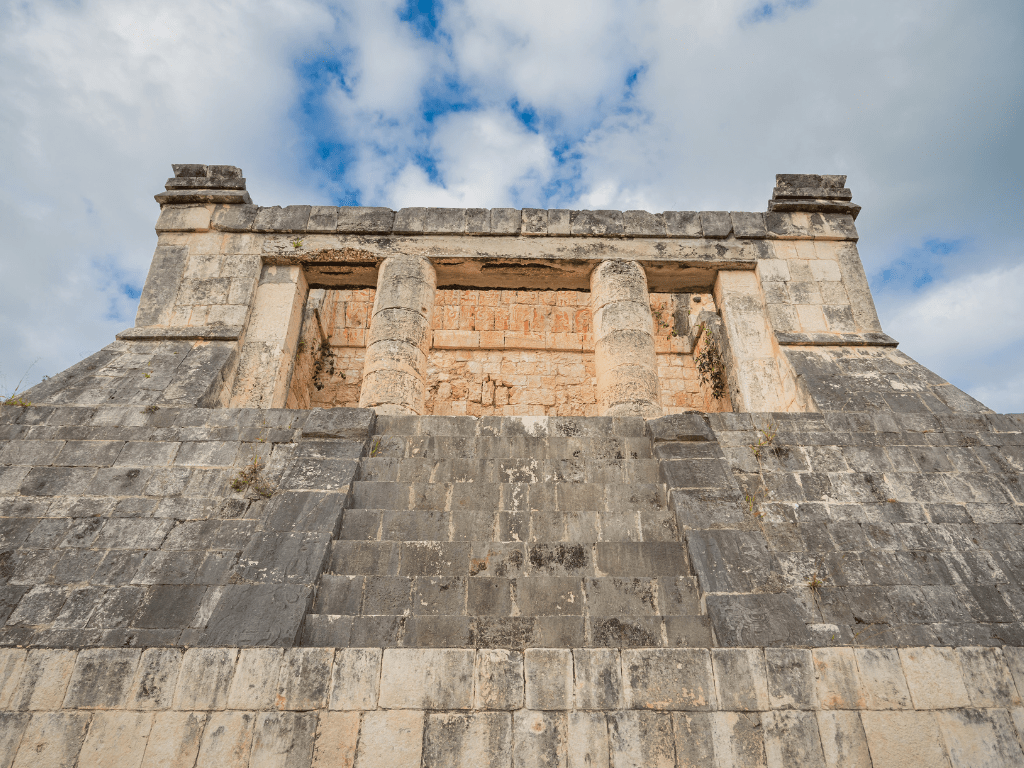
For the indigenous peoples of Mexico, Chichen Itza represents a proud legacy of ancient civilizations that thrived in this part of the world. The Mayans were one of the most advanced cultures in pre-Columbian America, with a rich history that spans thousands of years. Today, people all over Mexico recognize Chichen Itza as one of the most important symbols for Mayan heritage.
The site has become an icon not just for Mexicans but for people around the world who are fascinated by ancient civilizations and their achievements. The grandeur and scale of Chichen Itza’s architecture and engineering are testament to what human beings can achieve when they set their minds to it.
Chichen Itza’s Influence on Mexican Culture
Mexican cuisine is renowned around the world for its bold flavors and unique ingredients, many of which have been influenced by indigenous cultures such as the Mayans. For example, dishes like cochinita pibil, which features slow-roasted pork seasoned with sour orange juice and annatto seeds, are believed to have originated in Yucatan – where Chichen Itza is located. In addition to food, Chichen Itza has also influenced Mexican art and design.
The iconic pyramid known as El Castillo has been replicated countless times in everything from souvenirs to logos for travel companies. Its angular shape and precise proportions make it an instantly recognizable symbol that evokes feelings of awe and wonder.
Preserving Chichen Itza’s Cultural Legacy
As Chichen Itza gains more attention and visitors from around the world, it is important to ensure that its cultural legacy is preserved for future generations. This means not just protecting the physical structures and artifacts at the site, but also promoting understanding of the Mayan culture and its significance in Mexican history.
Fortunately, there are many organizations and individuals working to promote awareness of Chichen Itza’s cultural importance. Educational programs, cultural festivals, and community outreach initiatives all play a role in keeping this remarkable site alive for years to come.
The Power of Ancient Symbols
Chichen Itza is just one example of how ancient symbols can have a profound impact on modern societies. Whether it’s the pyramids of Egypt or the temples of Angkor Wat in Cambodia, these structures are more than just tourist attractions – they are enduring symbols of human achievement that have stood the test of time.
As we continue to explore our planet’s rich cultural heritage, let us remember that it is not just about discovering new things – it is also about preserving what we already have. By protecting sites like Chichen Itza and promoting awareness of their cultural significance, we can ensure that future generations will be able to appreciate these remarkable achievements just as much as we do today.
Visiting Chichen Itza Today
Tips for Visiting the Site
Chichen Itza is a magnificent site that attracts tourists from all over the world. However, visiting it can be quite challenging if you are not prepared. Here are some tips to make your trip to Chichen Itza more enjoyable:
1. Plan ahead: Book your tickets in advance to avoid long lines at the entrance. You can also hire a tour guide who will provide you with valuable insights about the site.
2. Wear comfortable clothing and shoes: The site is enormous, and you will need to walk a lot. Make sure you wear comfortable clothes and shoes that are suitable for walking.
3. Bring sunscreen and water: The sun can be scorching, especially during mid-day hours. Make sure you bring sunscreen and plenty of water.
4. Visit early in the morning or late in the afternoon: The site opens at 8 am, but it’s best to visit early in the morning or late in the afternoon when it’s less crowded. 5. Don’t forget your camera: Chichen Itza is a photographer’s paradise, so make sure you bring your camera with you.
Preservation Efforts
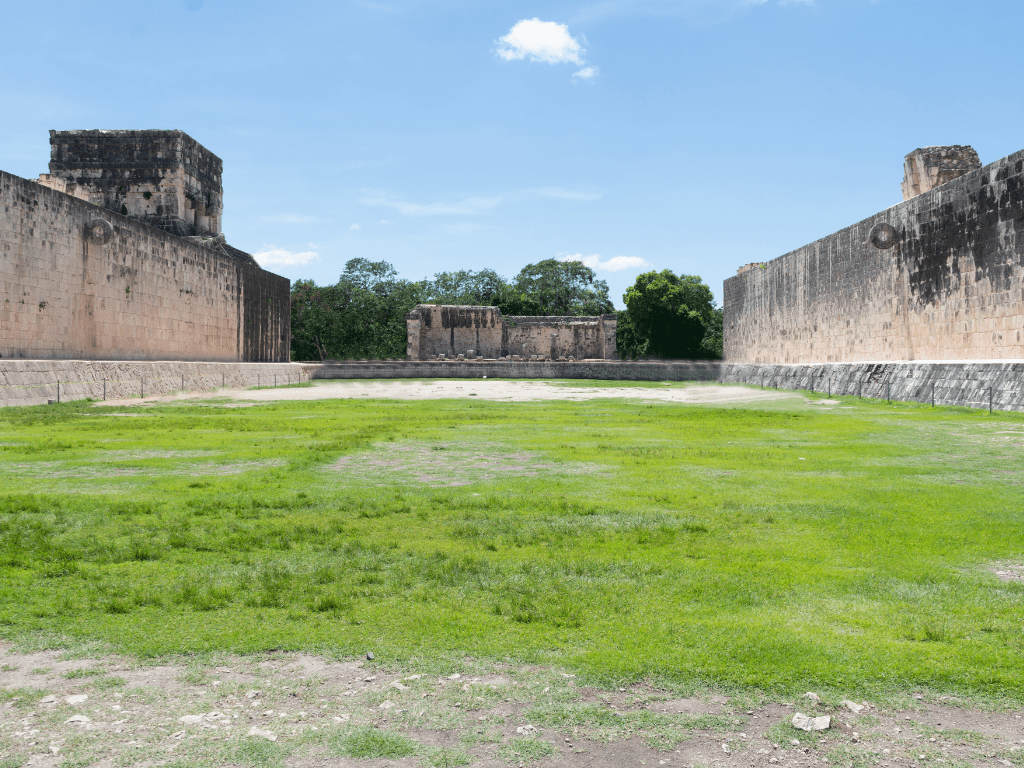
Chichen Itza is one of Mexico’s most iconic sites, but its preservation has been a concern for many years due to increasing tourism and natural disasters such as hurricanes and earthquakes. Fortunately, there have been efforts by Mexican authorities to preserve this world-renowned site for future generations. In 1988, Chichen Itza was declared a UNESCO World Heritage Site, which means that it is protected by international law from any form of destruction or damage.
In addition, there have been ongoing preservation efforts by Mexican authorities who have implemented measures such as limiting visitor access to certain areas of the site and restricting commercial activities around Chichen Itza. It’s important for visitors to be mindful of the fragile nature of this site.
Avoid touching or climbing on any of the structures, and do not bring any food or drinks into the site. By respecting these rules, we can all help preserve Chichen Itza for future generations to enjoy.
The Future of Chichen Itza
Despite these preservation efforts, there are still concerns about the effects of over-tourism on Chichen Itza. The site attracts over 2 million visitors per year, which puts a strain on its delicate ecosystem and infrastructure.
Mexican authorities are aware of these issues and have plans in place to address them. For example, they are exploring ways to limit the number of visitors per day and introducing more sustainable tourism practices that will reduce the impact on the environment.
It’s up to all of us to ensure that Chichen Itza remains a wonder of the world for generations to come. By supporting these preservation efforts, we can help protect this iconic site while still enjoying its beauty and history.
The Legacy of Chichen Itza
Chichen Itza is not simply an impressive collection of ancient structures; it’s a testament to the innovative and creative minds of the Mayan people. Their ability to create such sophisticated engineering feats without modern technology is truly remarkable.
The cultural significance of this site cannot be overstated, as it serves as a powerful symbol for Mayan heritage and identity. Through preservation efforts and continued interest in this wonder of the world, we can ensure that future generations will be able to marvel at the ingenuity and craftsmanship of our ancestors.
A Call for Conservation
While Chichen Itza has stood for centuries, it is not immune to the ravages of time and human impact. Despite being designated as a UNESCO World Heritage site, there have been instances where visitors have accidentally damaged structures or taken artifacts. As such, it’s crucial that we take conservation seriously and treat these sites with respect.
This means not climbing on structures or touching anything within their bounds. Furthermore, there should be increased funding towards research efforts aimed at understanding how to better preserve these monuments for centuries to come.
In some cases, natural disasters like earthquakes can cause damage or destroy portions of these sites. We must equip ourselves with information on how best to respond in case such an event occurs.
The Impact on Modern Day Culture
The influence that Chichen Itza has had on modern-day Mexican culture cannot be overstated. The structures are symbols that represent a rich cultural legacy that goes beyond national borders; they serve as reminders of how significant Mayan civilization was in shaping human history.
Additionally, Chichen Itza serves as a popular destination for tourists from all over the world who want to learn more about ancient civilizations or experience something awe-inspiring firsthand. While tourism can have negative impacts on these sorts of sites if not managed carefully (like overcrowding or destruction of natural habitats), if done right, it can be a source of revenue that is reinvested in the preservation of these sites.
The Future of Chichen Itza
Despite the challenges faced by Chichen Itza, there is reason to be optimistic about its future. As more and more people learn about this wonder of the world and recognize its cultural significance, there will likely be continued efforts to protect it from harm.
Additionally, as technology advances, we may discover new ways to better preserve these structures. Ultimately, Chichen Itza shows us what’s possible when human creativity is given free reign.
The ingenuity displayed in its architecture and design serves as a reminder that no matter how much time passes or how much technology evolves, we have the capacity to create something truly remarkable. Hopefully, future generations will continue to look at this site with awe and admiration for many years to come. Chichen Itza is one of many reasons to visit Yucatan. Remember that Cancun and the Yucatan in general are very safe to vacation.
